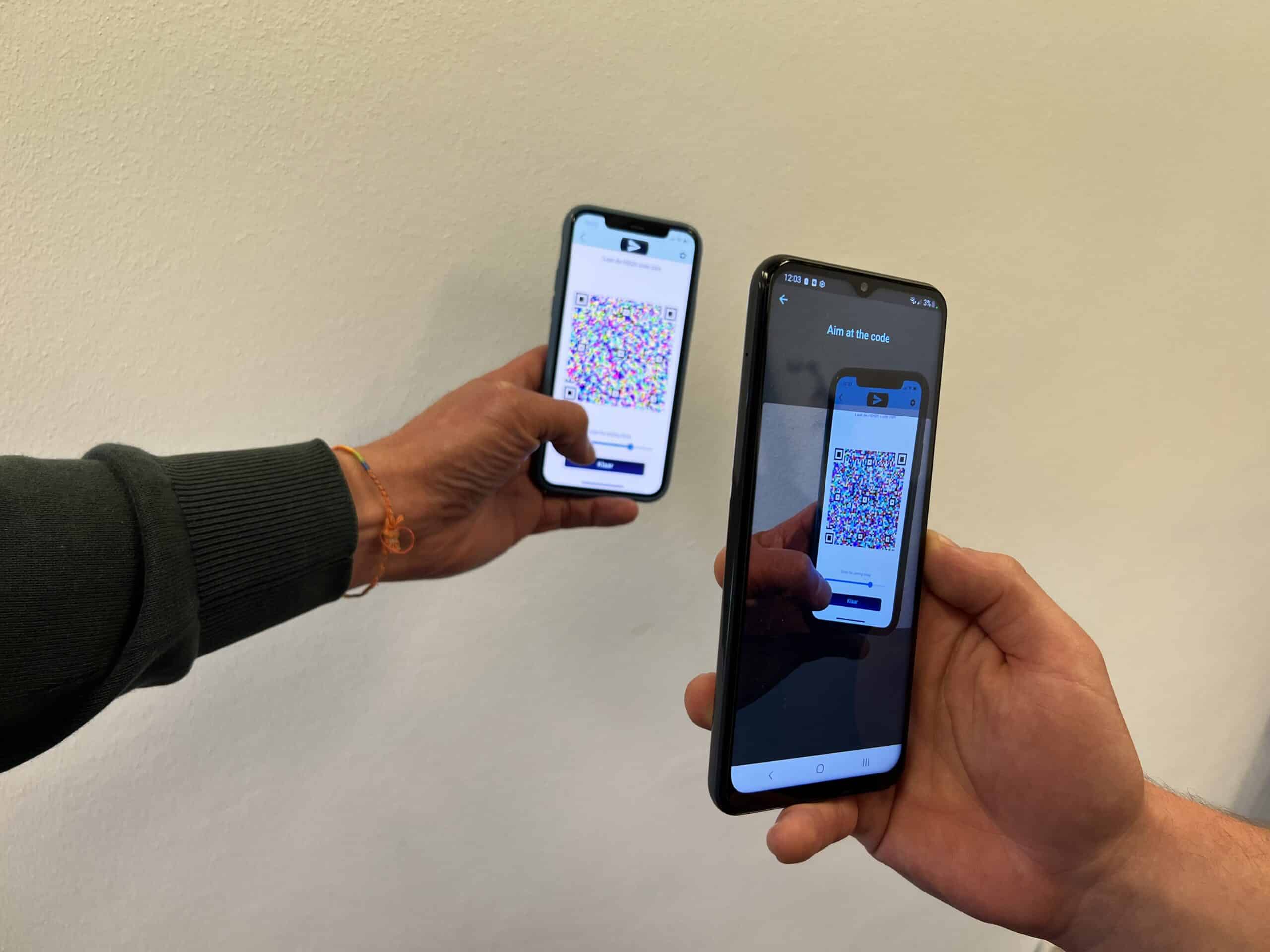
About LightDrop
- Founders: Patrick Moreu and Erno Langendijk
- Founded in: 2021
- Employees: 4
- Money raised: €500,000 (including Rabo Innovation Loan and a contribution from the Brabant Startup Fund)
- Ultimate goal: That every individual is given control over their own data instead of governments and corporations
We are all familiar with QR codes. Just point the camera of your phone at a QR code and you have almost all the information you need. With the emphasis on almost, because you still have to confirm that you agree to all kinds of this and that. Before you know it, you are sharing sensitive or personal information with external parties. Thanks to the advent of start-up LightDrop, you no longer have to worry about what happens to your data. The company has developed a technology that is similar to a QR code in many ways, but easier and more secure. In this instalment of Start-up of the day, co-founder Patrick Moreu talks to us in more detail about their development and company. Their greatest ambition? To be integrated into Google and Apple operating systems.
How did you come up with the idea for LightDrop?
“We initially had a solution, but we didn’t have a problem at first. So the idea arose purely from an idea and not out of a need. I started scouring the market looking for problems that we could solve with this technology.”
What is LightDrop?
“We are a technology company that has developed the newest variant of the QR code. Right now, the code can be used by accessing our app – but that is only for the pilot phase. Eventually the app will disappear again. A plug-in will replace it so that the technology can easily be integrated into other apps.
The QR code as we know it today is basically a referral system to an online environment; to a menu or an app, for instance. With the HDQR code, the data you want to request is already integrated into the code. So when you scan it, you see the information directly on your screen without having to go through a cloud first. A major advantage is that the code works not only online but also offline. So you don’t necessarily need Wi-Fi or 5G.”
The HDQR code looks a lot like the QR code. In terms of its name, but also visually.
“That’s right, we did that on purpose. After all, everyone is using the current QR code and already knows what it is. We wanted our code to be similar to that, because that way it’s user-easy. You more or less already have an intuitive sense of how it works. The difference with the QR code is that the HDQR code moves.”

What added value does an HDQR code offer?
“The code enables you to directly download information. By doing this, the information becomes the property of the user. This fits into a society-wide trend in which people want more and more control over their data and information. Currently, for example, the government is the central administrator of our digital identity. Sharing information is complex because you have to identify and authenticate yourself, e.g., by logging in with DigiD. Once all these intermediate steps become unnecessary, several other problems can be avoided.”
Can you give an example?
“For example, when you buy a concert ticket, you will receive an email confirmation. It’s only in that email that you can download your ticket. When you’re standing at the entrance of a festival surrounded by 50,000 people, you might not be able to download your ticket because you need to rely on a strong WiFi signal.”
Who did you develop this technology for?
“Two industries need our technology the most: healthcare and defence. Apart from these, as far as we know so far, there are about four other industries that are also interested in our technology. As we can’t focus on all these industries at the same time, we chose to focus on healthcare and defence. However, it is especially in healthcare that we can solve numerous technical problems. Those problems are validated across the healthcare sector: from the patient to the Ministry of Health. Working in healthcare involves dealing with a lot of personal data and often very sensitive information. Also, solving problems in healthcare really does have social relevance. If we can apply our methodology there, we will really be able to kick off a revolutionary transformation.”
You are about to run a pilot in healthcare. Can you tell us a bit more about that?
“We are going to run a pilot as part of a wound care project in cooperation with a major hospital and a home care organization. At the moment, healthcare professionals are frequently unable to share information with each other in a practical way. This is a well-known problem in healthcare. With our code, they will be able to do that. Then, for example, a nurse will receive the full information that they need directly on their mobile device.”

Did you ever think of giving up?
“Yes definitely. In my mind, giving up is just another way of saying that you’re taking a critical look at yourself. You ask yourself: Are we just trying to split hairs and justify what isn’t quite right or is it really OK? You sometimes get discouraged by that, but with a bit of positive commitment you can move on again. It feels very awkward when you are told ‘no’ while you are absolutely convinced about your technology. Your gut feeling then tells you it has to be a ‘yes’. Just like when the iPad arrived. When Steve Jobs launched that product, everyone said: ‘Utterly irrelevant.” But he had sensed that there was a need there. Once the tablet was on the market, everyone could see the advantages. We think back to that on a regular basis.”


